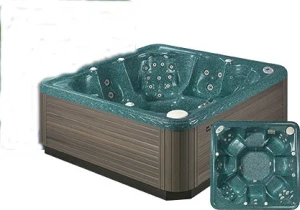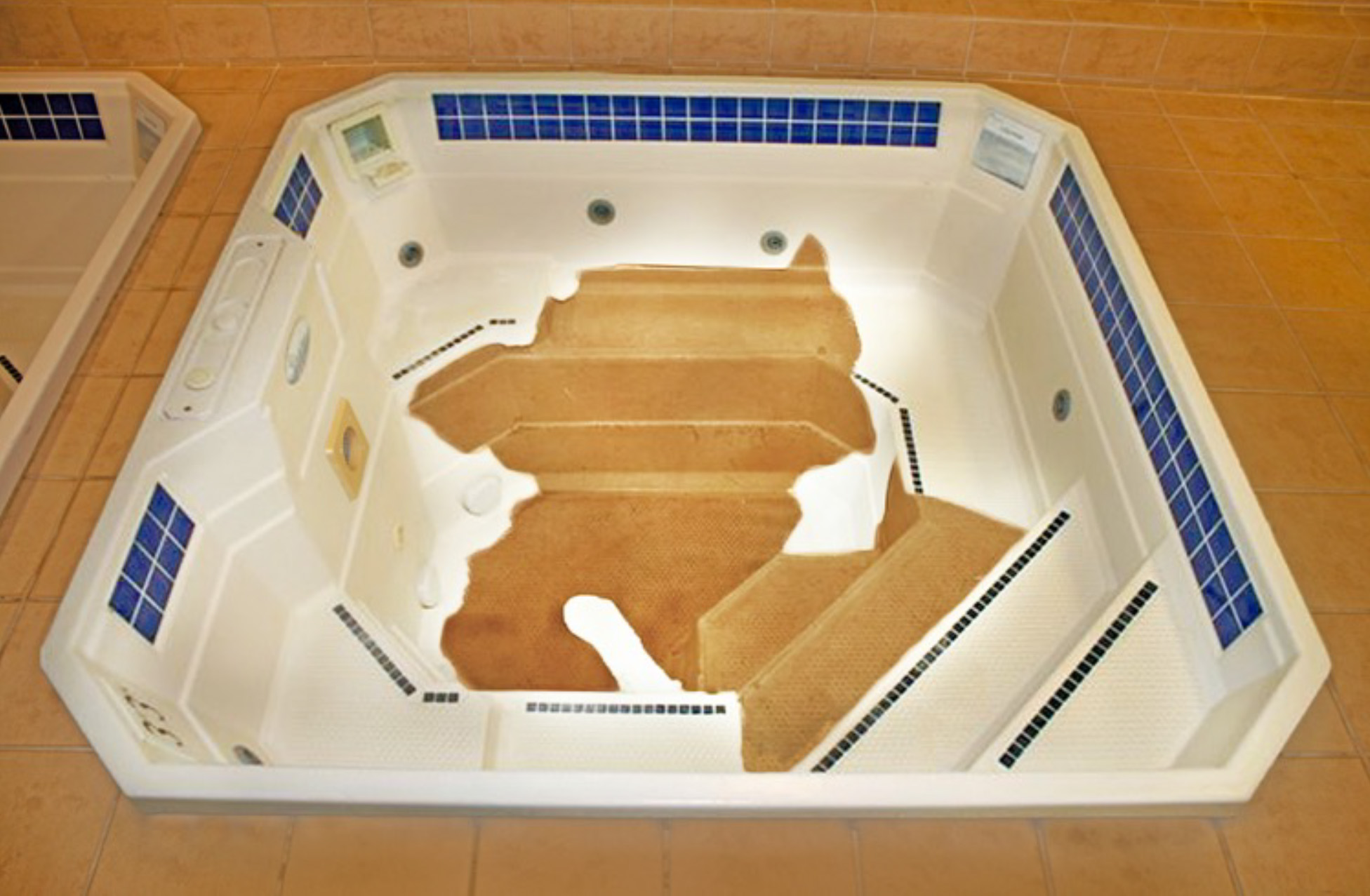Blog Title: “Solving Discoloration on Acrylic Spa Surfaces: Prevention and Repair” In the world of spa maintenance, preserving the pristine condition of acrylic surfaces is paramount for owners. A common yet perplexing issue some may encounter shortly after acquiring a new spa is the appearance of yellow stains or discoloration on its surface. Understanding the cause and identifying effective solutions for this problem are essential for maintaining the aesthetic appeal and integrity of your spa.
The discoloration of acrylic spa surfaces is predominantly attributed to chemical attacks, often resulting from the use of inappropriate water treatment chemicals or fragrances. A notable offender in recent times is “Tri-Chlor” (Trichloroisocyanuric acid), a chemical compound widely used in tablet form for swimming pool water treatment. While highly effective in pools, Tri-Chlor poses a risk to acrylic spas due to its acid content, which can aggressively bleach the pigments in the acrylic material. This issue arises when the dispenser, designed to float and gradually dissolve the tablet, settles along the spa’s edge, exposing the nearby acrylic surface to concentrated acid levels.
Recognizing the prevalence of this issue, one leading acrylic manufacturer undertook laboratory testing to validate the adverse effects of Tri-Chlor on acrylic pigments. Their findings confirmed that Tri-Chlor could indeed bleach the vibrant pigments used in acrylic spas. As a response, they have issued technical bulletins and produced warning labels advising against the use of Tri-Chlor in spas. These labels are now recommended for inclusion on all new spa units by manufacturers and dealers alike.
For spa owners seeking to avoid such chemical damage, it’s crucial to consult the product’s operation manual, seek advice from qualified dealers, or contact the manufacturer directly for recommendations on safe water treatment chemicals. An alternative to Tri-Chlor is “Di-Chlor”(Dichloroisocyanuric acid), available in powder or granular form, which is a less aggressive acidand commonly recommended for hot tubs and spas.
Fortunately, the impact of chemical-induced discoloration on acrylic surfaces is oftensuperficial, affecting only the top layer of the material. This means that with the right approach,the original color and finish of the spa can be restored. Multi-Tech Products offers a comprehensive repair kit designed for this purpose. The standard procedure involves carefullysanding, buffing, and polishing the affected area to remove the discolored layer and reveal theundamaged surface beneath. This procedure can be found here(Link to: (Buffing_PolishingDVD.vob).
By understanding the causes of acrylic surface discoloration and following manufacturerguidelines for chemical use, spa owners can prevent most instances of staining. And, with theavailability of professional-grade repair materials and techniques, restoring your spa to itsoriginal condition is both feasible and straightforward.
Thank you for turning to Multi-Tech Products for expert advice on maintaining the beauty and longevity of your spa. Our commitment is to provide you with solutions that ensure your spa remains a source of relaxation and joy for years to come.



Find all the essential information about Multi-Tech Products, from contact details to terms of service, in our comprehensive footer section. We’re here to help you with all your surface repair needs.

Your order has been confirmed & it is on the way. Check your email for the details